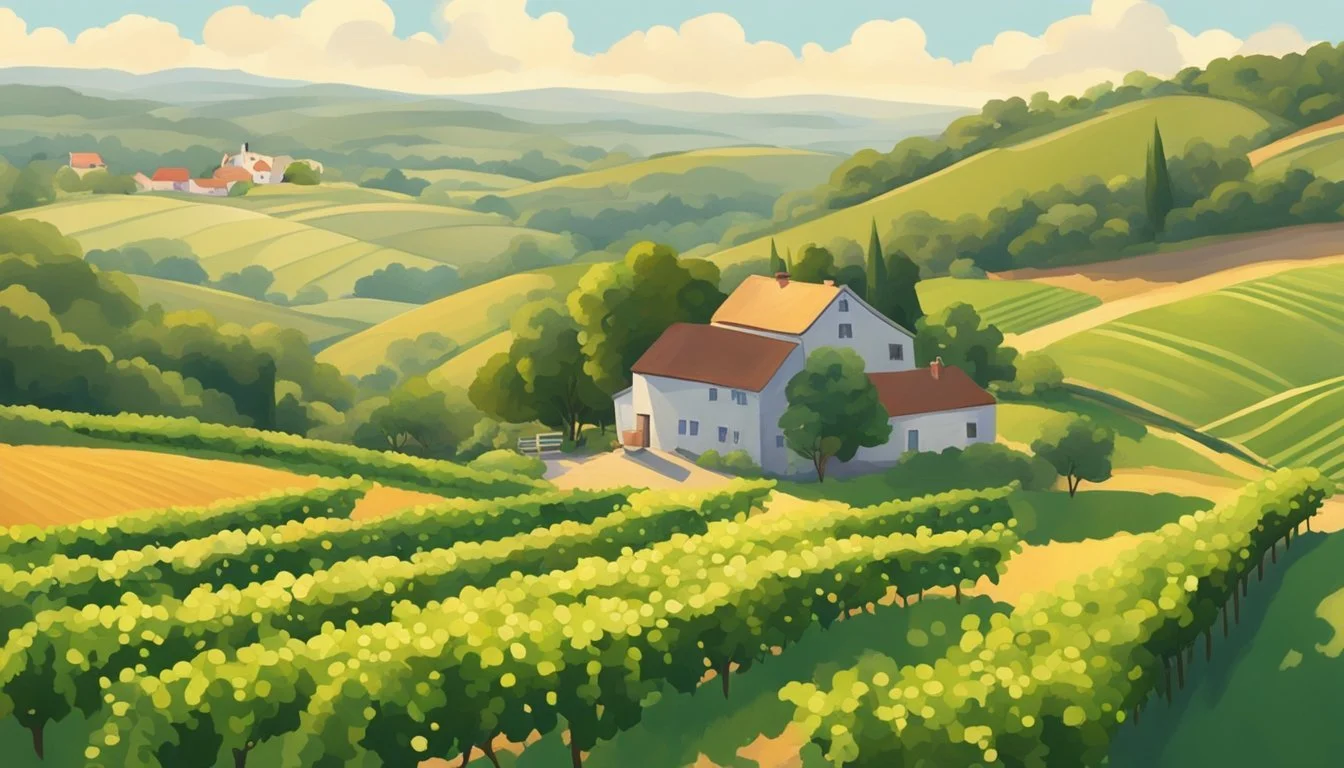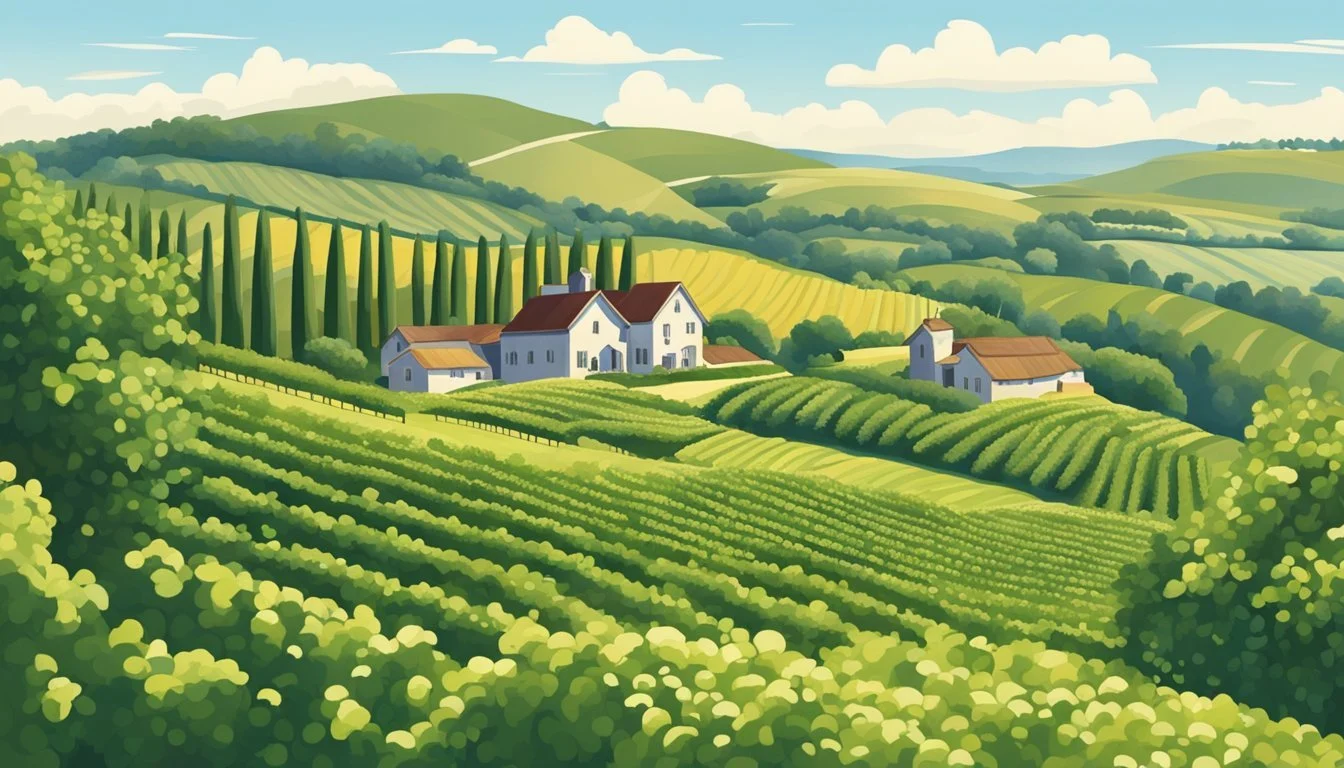Free Land for Vineyards
A Guide to Starting Your Own Winery
Dreaming of owning a vineyard but worried about the costs? Look no further because there are ways to secure land for your vineyard without breaking the bank. In some regions, governments and organizations offer free or low-cost land to individuals willing to invest in agricultural ventures such as vineyards. This can be an incredible opportunity to turn your winemaking dreams into reality with minimized financial barriers.
Finding the right land for your vineyard involves more than just securing a plot; the land must support grape growth. Sloped terrains are ideal because they provide excellent drainage, and ample sunlight is crucial for healthy vines. Before planting, conducting a soil test can ensure the soil's nutrient profile supports grape cultivation. Aligning your vineyard's unique needs with the features of the available land is essential to establish a successful vineyard.
Networking with local wine growers can be invaluable. They can offer advice on selecting grape varieties, provide access to vineyard hardware suppliers, and share labor for farming and harvest. Joining or starting a grape-growing club can bolster community support and resources, enhancing your vineyard’s potential. This supportive network can turn the daunting task of starting a winery into an achievable and exciting venture.
Assessing the Viability of Starting a Winery
To start a successful winery, one must evaluate various key factors, including industry details, competition, specific grape varieties, property suitability, and financial requirements.
Understanding the Industry
Understanding the wine industry is essential when planning to start a winery. The wine business involves growing grapes, winemaking, marketing, and sales. A clear grasp of industry trends, regulations, and consumer preferences is critical. Additionally, industry knowledge helps in recognizing potential opportunities and threats.
Market Analysis and Competition
Conducting a market analysis identifies the target audience and competitors. Analyzing consumer preferences and spending habits can help shape the marketing strategy. Researching competition involves understanding the strengths and weaknesses of existing wineries in the region, which can provide insights into differentiating your own operation.
Researching Grape Varieties and Climate
Selecting the right grape varieties for a vineyard is crucial. Different grapes thrive in different climates; thus, conducting thorough climate research is necessary. For example, some grapes prefer cooler climates, while others require more sun. Evaluating soil conditions, water availability, and frost risk also informs the choice of grape varieties.
Evaluating Property and Location
Choosing the right property involves several considerations. The land should ideally be sloped for optimal water drainage, with good sunlight exposure. Proximity to markets, transportation networks, and employment centers is also important. Additionally, performing soil tests ensures the land is suitable for vineyard cultivation.
Financial Projections and Startup Costs
Creating detailed financial projections includes estimating startup costs, such as land purchase, equipment, and licensing fees. Ongoing expenses like labor, marketing, and maintenance should be factored in. Viability assessments should consider potential revenue from wine sales, factoring in price ranges and market demand. Access to funding and investors is often essential.
Overall, a thorough assessment during the planning phase can significantly increase the likelihood of success in the winery business.
Planning Your Winery Business
Successful planning for your winery business involves creating a comprehensive business plan, choosing a unique and memorable name and brand, securing all necessary permits and licenses, and setting up your business entity and bank accounts.
Creating a Solid Business Plan
A detailed business plan outlines the vision and operational blueprint for your winery. Key components include:
Market Research: Identify your target audience, competitors, and market trends.
Financial Projections: Estimate startup costs, revenue forecasts, and profit margins.
Operational Plan: Describe your production process, supply chain, and staffing requirements.
Specific goals and a clear strategy help guide every aspect of the winery, ensuring you stay focused and profitable.
Naming and Branding Your Winery
Selecting a name is crucial as it reflects your winery’s identity. A memorable name that resonates with your target audience is key.
Name Creation: Ensure the name is unique, easy to pronounce, and relevant to your products.
Brand Identity: Develop a logo, color scheme, and font that reflect your winery’s personality.
Trademark Registration: Protect your brand by registering your name and logo with the appropriate authorities.
Branding consistency across all platforms fosters recognition and trust.
Obtaining Necessary Permits and Licenses
Starting a winery requires compliance with various regulatory requirements. Essential permits and licenses include:
Federal Licenses: Apply for a Basic Permit from the Alcohol and Tobacco Tax and Trade Bureau (TTB).
State Licenses: Requirements vary by state; check local regulations for specifics.
Local Permits: Obtain zoning permits, health department approvals, and business licenses.
Adhering to legal requirements ensures smooth operation and avoids potential fines.
Setting Up Your Business Entity and Bank Accounts
Choosing the right business structure is vital for legal and financial protection. Common options include:
Limited Liability Company (LLC): Offers liability protection and tax flexibility.
S Corporation: Suitable for those seeking specific tax benefits.
C Corporation: Ideal for larger businesses or those seeking venture capital.
Additionally, obtain an Employer Identification Number (EIN) for tax purposes. Open separate business bank accounts to manage finances efficiently and maintain clear records.
Financing Your Winery
Starting a winery requires a solid financial plan, including securing funding, understanding taxes, and obtaining appropriate insurance to cover various risks and expenses.
Exploring Funding Options
For initial capital, several funding options are available. One popular choice is the SBA 7(a) loan, which offers up to 25-year terms for real estate-related investments and up to 10 years for working capital.
Another option is crowdfunding through platforms like Kickstarter and Indiegogo. Such platforms allow future customers and supporters to invest small amounts of money into your project, often in exchange for product-related rewards. Additionally, it is possible to secure grants from both government and private entities, which do not require repayment and can significantly offset startup expenses.
Moreover, land loans can be specifically tailored to buy and develop vineyard property. They are suitable if you are purchasing new land or expanding an existing vineyard. These loans typically have favorable terms aligned with the agricultural focus of the business. It is essential to carefully evaluate each option and choose one that aligns with your long-term financial plan.
Understanding Taxes and Insurance
Properly managing taxes and securing business insurance are critical to maintaining long-term financial health. The winery will need to comply with local, state, and federal tax regulations. Tracking expenses and revenue accurately will simplify tax preparation. Consulting with a tax professional who specializes in agricultural or winery businesses can ensure compliance and optimize tax strategies.
Insurance needs for a winery are diverse. Key policies include:
Property Insurance: Covers damage to buildings, equipment, and crops.
Liability Insurance: Protects against claims from third parties due to accidents or injuries.
Product Liability Insurance: Addresses risks related to the wine produced.
Crop Insurance: Particularly important in case of natural disasters affecting grape harvests.
A comprehensive insurance package will mitigate risks and prevent significant financial losses, ensuring the sustainability of the vineyard business.
Vineyard Establishment and Maintenance
Establishing and maintaining a vineyard involves careful planning and ongoing effort to ensure healthy vine growth, optimal grape yields, and protection against environmental factors.
Selecting and Preparing the Land
Choosing the right land for a vineyard is crucial. The soil should be well-draining, as waterlogged soil can harm vine roots. Conduct a soil test to check for nutrient levels and pH balance. A slope can aid drainage and increase sunlight exposure, enhancing grape quality.
Clearing the land and preparing the soil with organic matter improves its structure and fertility. Proper preparation sets the foundation for a productive vineyard.
Planting Vines and Managing Growth
Selecting the appropriate grape varieties and rootstocks for your climate and soil conditions is essential. Plant the vines with adequate spacing to allow airflow and sunlight penetration, reducing disease risk.
Use trellises to support the vines, guiding their growth and making maintenance easier. Regular pruning ensures healthy growth by removing dead or excess vine parts.
Installing Irrigation and Drainage Systems
Efficient irrigation and drainage systems are necessary for vine health. Drip irrigation is often preferred as it delivers water directly to the roots. Setting up a proper drainage system helps prevent water accumulation, which can lead to root diseases.
Considering local climate conditions ensures the system supports the vineyard year-round. Regular checks and maintenance are essential for optimal water management.
Combatting Pests and Diseases
Vineyards are susceptible to various pests and diseases, which can affect vine growth and grape quality. Integrated pest management (IPM) is an effective approach, combining different strategies such as biological control and chemical treatments.
Regular monitoring and early detection are key to preventing significant damage. Employing pest-resistant rootstocks and maintaining vineyard hygiene also help in reducing pest and disease outbreaks.
Routine Maintenance and Labor Considerations
Ongoing maintenance is vital for a thriving vineyard. Tasks include pruning, weed control, and soil amendments. Vineyard owners must plan for seasonal labor needs, particularly during planting and harvest periods.
Using efficient tools and machinery can reduce labor costs and increase productivity. Training workers on best practices ensures tasks are performed effectively, maintaining the vineyard's health and productivity.
Production of Wine
The production of wine involves various steps, from cultivating grapes to the final bottling process. Each step requires careful planning and precise execution to ensure high-quality wine.
The Wine Growing Season and Harvest
The wine growing season starts in spring when grapevines begin to bud and continues through summer as grapes mature. During this period, temperature and soil conditions play crucial roles. Frost can damage young shoots, so frost-prevention measures are essential.
Harvesting occurs in late summer or early fall when grapes have reached optimal ripeness. Determining the right time to harvest involves monitoring sugar levels, acidity, and tannins. Hand-picking or machine harvesting may be used, each having its benefits and drawbacks.
Processing Grapes and the Art of Winemaking
Once harvested, grapes undergo sorting and crushing. Sorting removes damaged grapes and foreign materials, ensuring only quality fruit goes into production. Crushing breaks the skins, releasing juice and pulp.
Next, fermentation converts sugars into alcohol using yeast. This can be done in various vessels such as stainless steel tanks or oak barrels. The choice of vessel affects the wine's flavor profile. Temperature control during fermentation is vital to manage the development of desirable wine traits.
Aging, Bottling, and Storage
After fermentation, the wine requires aging. Aging can take place in oak barrels, stainless steel tanks, or bottles. Oak barrels impart distinct flavors and tannins to wine, which can enhance complexity and depth.
Once the aging process is complete, the wine is ready for bottling. Bottling must be done in a clean environment to avoid contamination. Proper storage conditions, including temperature and humidity control, are essential to preserve the wine's quality.
In summary, each phase of wine production, from vine to bottle, demands attention to detail and specialized knowledge.
Marketing and Selling Your Wine
To effectively market and sell your wine, it's crucial to focus on strategic marketing, creating an engaging tasting room experience, enhancing your digital presence, and establishing strong distribution channels. These elements will help you reach your target audience, differentiate from competition, and maximize profit.
Developing a Marketing Strategy
Creating a marketing strategy involves identifying your unique selling points. Highlight attributes like wine quality, vineyard location, and organic or niche offerings. Target your audience through tailored messaging that resonates with their preferences.
Use a mix of traditional and modern marketing channels. Attend wine expos, partner with local events, and utilize print advertisements. Engage with potential customers through social media platforms and email campaigns to keep them informed about new releases and promotions.
Building a Tasting Room Experience
A tasting room is a direct way to showcase your wines. Ensure the space is welcoming, with knowledgeable staff who can provide insights into your winery's offerings.
Offer guided tastings, telling the story of each wine and the vineyard's history. Consider holding special events, such as winemaker dinners or seasonal festivals, to attract visitors. Focus on creating memorable experiences that will encourage guests to purchase wine, join your wine club or share their experience with others.
Digital Marketing and Website Presence
An effective digital marketing strategy starts with a professional and user-friendly website. Ensure it is optimized for search engines to attract organic traffic. Include essential information like the history of your winery, wine catalogs, and an online store for easy purchasing.
Utilize social media platforms to engage with your audience. Share behind-the-scenes content, wine-related tips, and customer testimonials. Email marketing can also be effective; send newsletters with updates on new wines, upcoming events, and special promotions.
Distribution: Restaurants, Local Stores, and Shipping
Securing distribution channels is vital for expanding your reach. Form partnerships with local restaurants and wine shops. Offer exclusive deals or co-host events to promote your wines within these establishments.
Consider a direct-to-consumer shipping model. This can be facilitated through your website, allowing wine enthusiasts from different regions to have access to your products. Ensure compliance with shipping laws and regulations to streamline this process and avoid complications.
Understanding Legal and Ethical Considerations
Starting a winery requires navigating various regulations and protecting valuable assets. This includes adhering to alcohol laws and securing intellectual property rights.
Complying with Alcohol Regulations
To operate legally, wineries must obtain multiple licenses and permits. Key among these is the federal permit from the Alcohol and Tobacco Tax and Trade Bureau (TTB). This permit is essential for the production and sale of alcohol.
Additionally, wineries must comply with state-specific licensing requirements, which may vary significantly. Consulting a lawyer who specializes in winery law can be beneficial. They can guide you through obtaining necessary permits and licenses.
Wineries also need to adhere to excise and sales taxes regulations. This involves regular filings with both federal and state authorities. Proper record-keeping ensures compliance and avoids hefty fines.
Finally, labelling regulations enforced by the FDA must be followed. Labels must accurately reflect the contents, origins, and health warnings to maintain transparency and consumer trust.
Protecting Your Assets and Intellectual Property
Safeguarding the intellectual property of a winery is crucial. This includes trademarks for the brand name, logo, and specific wine names. Filing for trademarks ensures that others cannot use or copy your protected names and symbols.
It's also important to secure copyright protections for any unique content, such as promotional materials and product descriptions. This helps in creating a distinctive identity in a competitive market.
Another critical step is obtaining insurance. This includes coverage for property, liability, and business interruption to protect the physical and financial health of the winery.
Hiring a lawyer to draft and review contracts can protect against disputes and ensure that agreements with suppliers, distributors, and employees are legally sound. Legal advice is essential in safeguarding the winery’s interests and assets.





